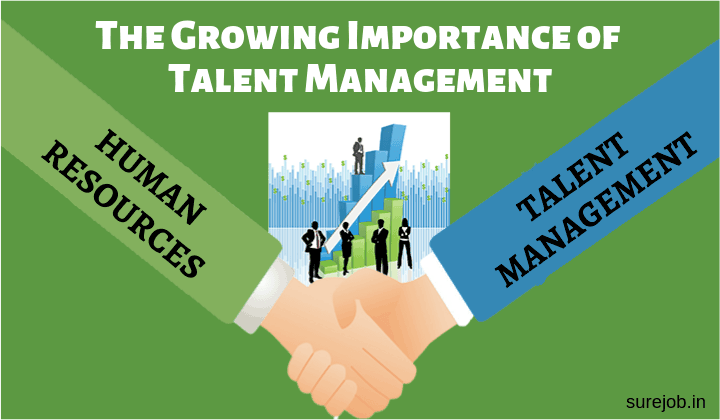Human resource management is a core function of any organization- small or large.
Earlier, human resource management was confined to employing right people for a job, keeping them motivated through promotions and cash incentives, managing leave schedules, arranging staff to replace those leaving an organization for any reason and formulating policies and rules for staff and management.
On the other hand, talent management has emerged as a major area in human resource management. Often, human resource departments(HR Departments) overlook talent management, leading to staff attrition that translates as losses for the organization.
Here we examine all about human resources and talent management in this prevailing era.
Redefining Human Resources
As mentioned earlier, human resource management was confined to a few functions in any organization. While these functions are important for every business, every human resource department now needs to relook its roles.
Over the last decade, advances in technology, advanced startup ecosystems leading to entrepreneurship, remote working, freelancing and high staff attrition is redefining both- human resources and its management.
This means HR departments around the world have to their decades-old policies to meet new exigencies. They need to incorporate talent management as a major function.
What is Talent Management?
Talent management has largely remained a gray area for most organizations, regardless of their size. While every business strives to hire the best candidate for a job, it is not always possible to know how they would perform upon employment.
Obviously, some employees would perform well despite lesser experience and possibly lower academic qualifications.
In stark contrast, staff with impressive experience and matching qualifications may turn out as underperformers.
This is where talent management comes into play. It is a vital function that HR departments around the world have to undertake, regardless of their organization’s size and location.
Blending Human Resources and Talent Management
Every organization serious about staying in business needs to blend human resources and talent management. The process has to be seamless.
While breaking away from traditional human resource management human resource management practices is vital, it is not the only method. There are several ways that human resources and talent management can be synchronized to meet the needs of an organization and ensure it keeps pace with time.
This begins with the hiring process.
Staffing Strategies
Human resource managers and their departments serious about talent management have to firstly draw new staffing strategies. This includes taking stock of current staff, their positions and roles. HR departments will have to chalk a short-term, mid-term and long-term strategies for talent management.
This involves coordinating with various departments. For example, HR departments need to identify staff that are retiring or have resigned from services and need to be replaced immediately or within a reasonable span of time.
While those leaving would possess a specific set of skills or talent, it is not necessary to find matching people to fill these imminent vacancies.
Instead, human resource managers can look for candidates that are available for work at short notice and possess several more skills that would prove useful for the company.
Technological Advances
Human resource departments will also need to identify the number of people that would be required. Technological advances eliminate the need to have more staff for any specific function unless it is labour intensive.
This involves hiring people who possess the right set of skills that meet the needs of the hour. Such talent should also be upgradable.
Further, the strategy has to consider the median age of prospective employees: hiring too young can increase staff attrition. This is because younger workers are attracted far too easily by slightly greater pay or an employer’s market image. Hence, they will switch jobs sans second thoughts.
Hiring older employees means an organization would be saddled with one or more staff that lack talent needed in this era. Hence, it would incur expenses on training such staff to bring them at par with necessary standards.
Training & Skills Upgrade
Earlier, training and skills upgrade was a human resource function often relegated to the back seat. Instead, the burden of training was left to individual departments within an organization.
Such scenarios resulted in a gross mismatch of talent between various departments: while some would possess the required talent for a job, others in the organization would lag behind.
Synchronizing human resources with talent management will involve upgrading the skills of every employee to ensure compatibility between various departments. By no means, this would be an easy task.
It takes time, effort and of course, resources. Hence, human resource managers and departments will have to coordinate efforts with others in an organization and create or find the right kind of training.
This function of talent management is vital since it puts an organization ahead of most competitors.
Identifying Remote Workers & Freelancers
Finding the right talent for an organization is not always possible at every location. In such cases, HR departments will have to identify possibilities where a required talent at a distant location is available to perform specific functions.
Globally, telecommuting or remote working- also called working from home- is a growing trend. Human resources can tap into this trend and hire workers with needed skills.
Freelancers with excellent skills are also available for almost every task- specialized and non-specialized. Hiring freelancers is yet another way of talent management.
It provides an organization with the right people for a job while dispensing with the need to hire full-time workers that lengthen the payroll.
Rewards Strategy
Days, when financial rewards were sole consideration of any employee, are over. Nowadays, workers look for rewards that are far beyond pecuniary gains. These include promotions, posting to new locations for shorter periods and timely appreciation of efforts.
Rewarding employees only with money is never helpful. While an employee may hold on to a position because of the financial reward, they will be prone to leave if given a better offer.
Such scenarios are manageable by having a great rewards strategy. Specify what is expected of an employee and provide realistic deadlines. Those who achieve targets can be rewarded with promotion or transfer to a chosen location.
They can also be permitted to work from home on some occasions. Combine these rewards with some financial gain too. A pat on the back works but adding some cash to it works wonders.
Reducing Staff Attrition
The bane of any organization in talent management is attrition rates. Valuable employees exit from an organization for numerous reasons. Staff leaves when they feel their efforts are unappreciated.
Inability to utilize skills to the fullest is the second most compelling reason for staff attrition. Third ranks overall poor or low morale among employees due to various reasons.
Talent management, therefore, has to consider all these elements. While a rewards strategy can help eliminate that overall feeling of being unappreciated, serious steps are needed to check other reasons.
HR departments have to find adequate opportunities for talented staff to utilize and prove their skills. Concrete steps are also required to counter problems caused by low morale.
This involves identifying reasons leading to low morale and eliminating them.
Outsourcing Talent
Other than telecommuting workers and freelancers, human resource managers also have to consider possibilities of outsourcing some functions of an organization. Outsourcing saves costs but not always.
However, it does ensure that best talent is available from a domestic or foreign services provider.
Outsourcing as part of talent management plays very vital roles. It offers the organization, flexibility and choice when looking for a service provider. This translates as hiring the best talent, albeit outsourced.
Further, outsourcing renders possible, better monitoring of performance. Contractors are obliged to provide a report about work completed and other relevant details. Anxious to retain a contract, these outsourced service providers exert extra efforts to ensure they stay in business.
Career v/s Job
Smaller organizations are highly prone to loss of talent. Their staff departs in favour of employment at bigger, reputed organizations. This is a sphere where HR departments can play a major role and stem talent loss.
Taking measures whereby an employee is assured of developing a career rather than being influenced by the size of an organization helps immensely.
When employees are assured they can look forward to a long, lucrative career, they exert extra efforts and upgrade their own skills to some extent.
Once an employee envisions a career in an organization, they engage in team building within various departments.
This brings together a pool of talent, exchange of ideas and helps increase productivity.
Leadership Development
Understandably, no employee would like to remain in the same position. They would look at elevating their position within the organization. While performance-based promotions are fine, they are sometimes counterproductive.
Promoting a high performer that lacks managerial and leadership to a senior or supervisory position can prove a blunder. It will demotivate other staff while depriving the promoted person of job satisfaction.
Implementing leadership development initiatives as part of human resource management is helpful to counter such situations. It allows human resource managers to identify the right persons for a managerial or supervisory role.
Additionally, leadership development initiatives also mean, the organization develops a secondary and tertiary line of defence and offence that can be deployed, should the need arise. It enables talent retention.
Employee Assistance Programs
An increasing number of organizations are awaking to inherent advantages and importance of employee assistance programs for talent management. Employee assistance programs assure staff that their families or self would be cared for in the event of an unfortunate, unforeseen emergency.
It builds that deep sense of confidence while working for an organization and works wonders to build loyalty.HR departments can look at developing various employee assistance programs.
While basic, traditional employee care programs are adopted by small and large organizations, having a well-defined one definitely helps talent management, through increased staff retention.
There are no specific dos and don’ts in employee assistance programs. Hence, human resource managers can develop those that suit the organization and its employees.
However, care needs to be taken to ensure these programs are appealing and instil confidence among employees and tempts them to continue services.
In Conclusion
In modern human resource management, there are no limitations of time and space. Nor should the size of an organization prove to be a hurdle for talent management.
Managing talent requires astute planning, identifying the organization’s objectives and mapping ways and means to achieve those.
Talent management helps organizations reduce or eliminate losses or depletion of profits due to staff attrition, staffing and training new recruits. It helps organizations save a considerable number of productive man-hours that would otherwise be lost due to various reasons enumerated above.
Therefore, it is imperative that every organization, regardless of its size, should incorporate talent management as part of its overall human resource policies. Failure to do so can prove fatal to a business.









